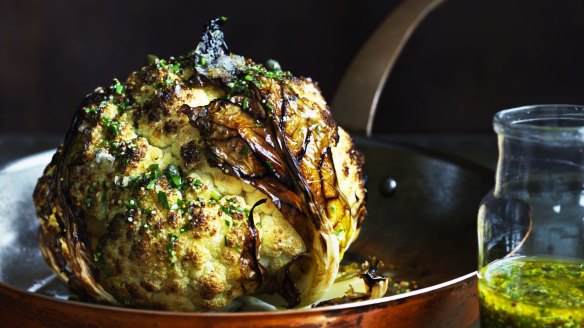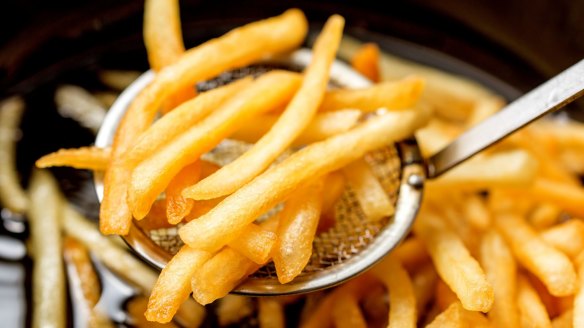How to cook the perfect whole cauliflower

I love whole roasted cauliflower in restaurants but when I cook it at home it dries on the outside and the stalks remain hard. M. Rosales
Despite a roasted cauliflower eliciting the oxymoronic idea of a vegan tete de veau, I am rather fond of them and they make an appearance at the Brainfood Institute dinner table regularly. I slather them in a dressing of good yoghurt, extra virgin olive oil and smoked salt. Sometimes I fold in a tablespoon of hoisin sauce. It goes brilliantly with lamb. I had the same problem with my cauliflower and the bronze limp tips and turgid stem syndrome was only exacerbated when I turned the oven to fan-forced. The hot air dehydrated the florets, causing them to brown faster while the heat didn't have time to penetrate into the centre of the cauli. The trick is to increase the humidity. Try placing your cauliflower in a large ovenproof dish – enamel-coated steel is perfect for this. Drizzle with a little extra virgin olive oil, sprinkle with a little salt, cover with the lid and place into the over at 200C (180C fan-forced) and cook for 45 minutes to an hour or until done. The water in the cauliflower will evaporate and create a hot and humid environment, stopping the florets from drying while radiant heat will still give the cauli a brown finish. Remove the lid at the 40-minute mark if you like a little crunch.

How does the home cook responsibly dispose of cooking oil? I avoid any deep-frying because I don't know how to throw away the oil. D. Fotheringham
One of the biggest problems with waste cooking oil in the environment is people pouring it down the drain. A chum at Sydney Water bemoans the fact that when hot oil or grease hits the cold water in our wastewater pipes, it hardens. This combines with baby wipes that people throw in the toilet to form fatbergs, great subterranean lumps of obstructive white fat. So, pour your used oil, once cool, into containers, seal and place in the bin. Some local councils have cooking oil collection points at which cooking oil can be disposed and from there it will be sent to further processing to be turned into biodiesel.
Letters
A few weeks back we were talking about Swiss chard. W. Hu wrote, "I just returned from Switzerland and there they call 'Swiss brown' mushrooms 'brown mushrooms' ('champignons braun' as opposed to 'champignons Weiss'). There 'Swiss chard" is called 'colourful chard' ('Krautstiel farbig'). Next time I serve it up to a reluctant family I will be inspired to announce the dishes in a suitably muscular Germanic accent."
Send your vexing culinary conundrums to brainfood@richardcornish.com.au or tweet to @realbrainfood.
Appears in these collections
More:
From our partners
Original URL: https://www.smh.com.au/goodfood/how-to-cook-the-perfect-whole-cauliflower-20180911-h157pb.html
